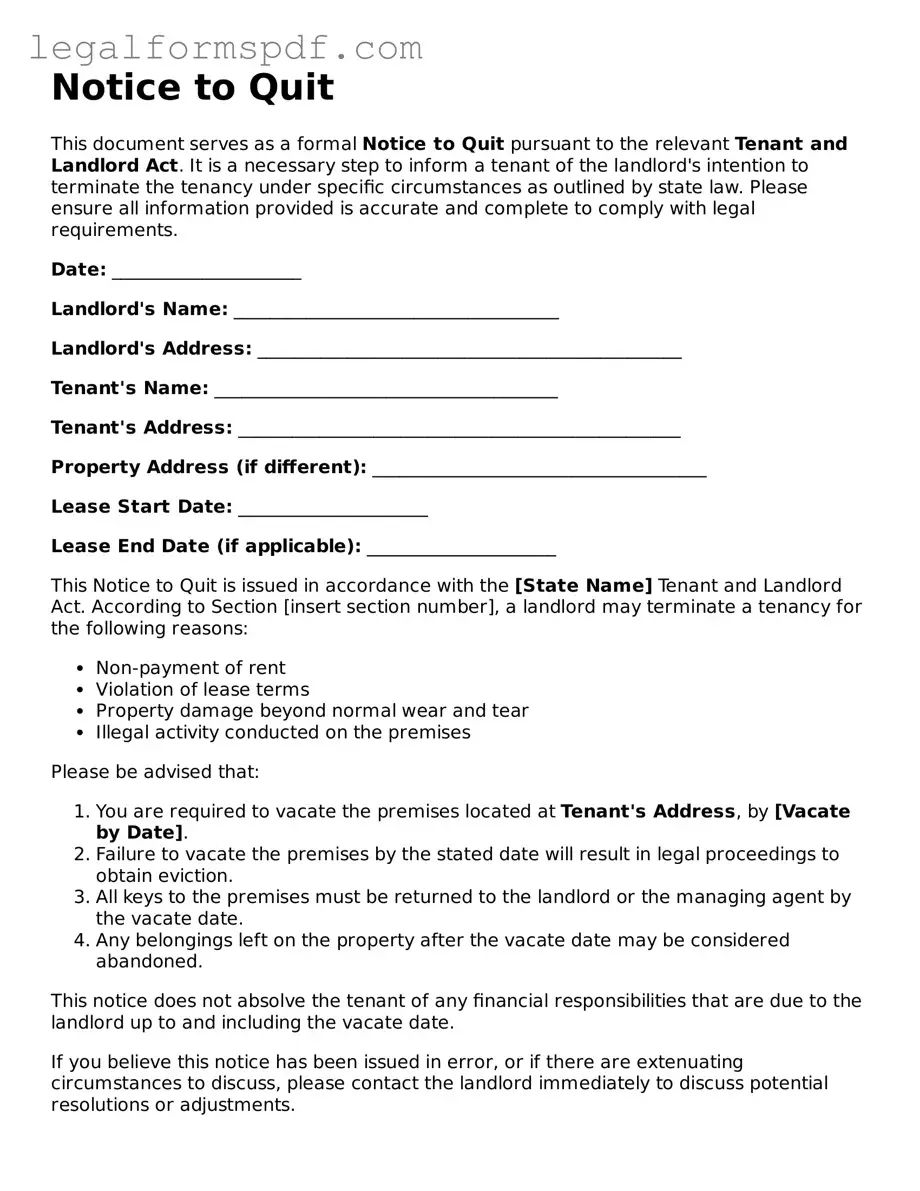Notice to Quit
This document serves as a formal Notice to Quit pursuant to the relevant Tenant and Landlord Act. It is a necessary step to inform a tenant of the landlord's intention to terminate the tenancy under specific circumstances as outlined by state law. Please ensure all information provided is accurate and complete to comply with legal requirements.
Date: _____________________
Landlord's Name: ____________________________________
Landlord's Address: _______________________________________________
Tenant's Name: ______________________________________
Tenant's Address: _________________________________________________
Property Address (if different): _____________________________________
Lease Start Date: _____________________
Lease End Date (if applicable): _____________________
This Notice to Quit is issued in accordance with the [State Name] Tenant and Landlord Act. According to Section [insert section number], a landlord may terminate a tenancy for the following reasons:
- Non-payment of rent
- Violation of lease terms
- Property damage beyond normal wear and tear
- Illegal activity conducted on the premises
Please be advised that:
- You are required to vacate the premises located at Tenant's Address, by [Vacate by Date].
- Failure to vacate the premises by the stated date will result in legal proceedings to obtain eviction.
- All keys to the premises must be returned to the landlord or the managing agent by the vacate date.
- Any belongings left on the property after the vacate date may be considered abandoned.
This notice does not absolve the tenant of any financial responsibilities that are due to the landlord up to and including the vacate date.
If you believe this notice has been issued in error, or if there are extenuating circumstances to discuss, please contact the landlord immediately to discuss potential resolutions or adjustments.
Landlord's Signature: _______________________________
Date: _____________________
This document is intended for informational purposes only and may not cover all laws or specifics related to your situation. Consultation with a professional is recommended for legal advice.
